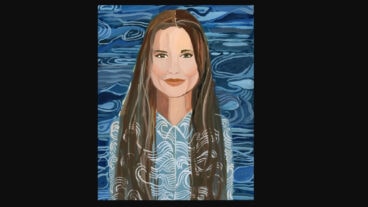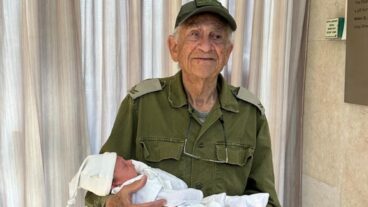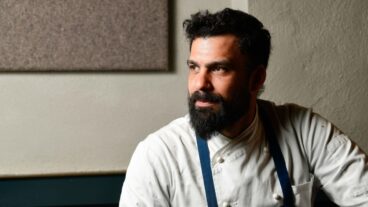For Prof. Alon Friedman research begins and ends at the bedside. The Ben-Gurion University (BGU) professor, who just won the prestigious 2007 Michael prize for epilepsy research from the Michael Foundation of Germany, first began exploring the field after a clinical observation that the only thing patients suffering from epilepsy after a trauma or an illness had in common was a breakdown in the brain-blood barrier.
“We went back to the lab and asked what does this breakdown mean to the brain?” says Friedman. Over the next 10 years, he and fellow researchers at the Faculty of Health Sciences at BGU, together with Professor Uwe Heinemann from the Charite Medical University in Berlin and Professor Daniela Kaufer from Berkeley University, worked on this question and today they believe they have found not just the answer, but also a potential cure that they might one day be able to take back to patient bedsides.
Traditionally it was thought that the way to treat brain diseases was through the nerve cells. Now doctors take a more holistic approach and look at the nerves and supporting cells of the brain as a complete functional unit. This approach is supported by the US medical research organization, the National Institute of Health. “Most brain diseases originate in blood vessels,” explains Friedman.
Friedman focused on the delicate blood-brain barrier, a barricade in the brain that separates the bloodstream from the neural connections of the brain. Through his work with patients, Friedman discovered that many patients who are at risk of developing epilepsy suffer leaks and tears in the blood-brain barrier. These leaks can be the result of a head trauma, a stroke, diabetes, or even in some cases epilepsy itself.
Friedman, who carries out his research at the Soroka University Medical Center and is today one of the leading figures in this field, found that when the blood-brain barrier was disrupted, albumin, the most common protein in the bloodstream, leaks through these tears in the barrier into the brain.
When the albumin comes into contact with specific brain cells it interacts harmfully with them. This leads to a chain of molecular events (changes in the levels of specific brain proteins) that cause abnormal cell activity. This abnormal activity often takes the form of an epileptic seizure, and later causes brain cell degeneration. Epilepsy can occur many years after the trauma, so a trauma in birth or early childhood might only trigger fits much later in life.
“This signal only normally happens once in the development of the brain, when the brain is still developing in uteri and in the first few months after birth,” Friedman tells ISRAEL21c. “We discovered that it happens again after a brain injury. The brain “feels” something terrible has happened and in some ways goes back into development mode. It seems as if the brain is trying to cure itself, but for an adult brain to go back into the same kind of development he experienced as an embryo is very dangerous. The disadvantages are much greater than the advantages.”
Over two and half million Americans are epileptics, and according to the National Institute of Neurological Disorders and Strokes, in the US alone, more than five million people suffer from traumatic brain injury. Friedman estimates that of this figure, some 20 percent go on to develop epilepsy, while 20% also develop cognitive impairment.
While epilepsy has many causes, including kidney disease and genetic inheritance, for elderly people stroke is a common cause of epilepsy, while in younger patients, head trauma is a more likely cause.
By identifying the harmful interactions between serum albumin and brain cells that trigger epilepsy, Friedman believes that he can block the signal to prevent this disease from developing. “If we try to block this signal we prevent the changes from occurring,” he says.
So far, Friedman and his researchers have carried out animal tests and have proven that they can successfully prevent the development of epilepsy in most animals.
Friedman’s research in experimental animals has led him and Dr. Ilan Shelef, the head of the MR Unit in Soroka Medical Center to a series of observations in human patients confirming the importance of the blood-brain barrier in causing neurological disorders.
In the future Friedman hopes to follow up these observations with clinical tests. “At this stage we are looking to carry out more animal and clinical studies. We need to follow patients to see if our hypothesis is correct, then we have to find the right drugs to make this possible. It will take a few more years before a clinical treatment is ready,” he says.
Friedman believes the strength of his research lies in the fact that he works closely with patients. “This is unique,” he explains. “We go from the bedside of the patient, to the bench in the lab, and back to the bedside again. Most researchers work at university institutions and don’t spend much time with patients, we are lucky enough to work within Soroka Medical Center itself.
“In the past most medical research was clinical but since privatization and economization, research has moved out of the hospitals. Today’s hospital directors are under pressure to make a profit, they don’t have the money to care about research because in the short term it’s not profitable,” he adds.
Friedman first became interested in the working of the blood-brain barrier while he served his compulsory military service as a field doctor in the Israel Defense Force. During this time he noticed that severe stress in soldiers can also lead to leakages in the blood-brain barrier with accompanying problems. He continues to research this area.
“Over the years, thousands of different drugs have been developed for stroke and trauma patients, but most of them have failed, because the problem is that people have regarded the mechanisms of these diseases as the same,” explains Friedman.
“We have to get away from the idea that there is one disease and one problem,” he continues. “Not all stroke or trauma patients are the same. In 30 percent of these patients there are tears in the blood-brain barrier – our treatment would be aimed at them specifically. It doesn’t matter if the problem occurred because of trauma, infection, bacteria or stroke, if we have this problem of a tear, then we may have a way to prevent the brain damage.”
The Michael Prize is awarded biennially, and is specially designed to attract scientists under the age of 45.













